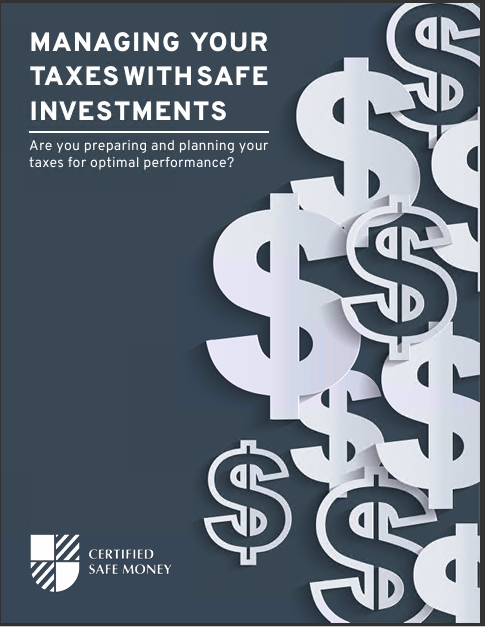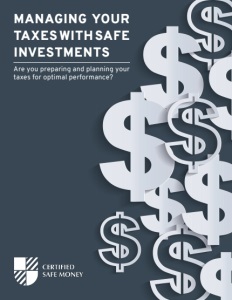Key Takeaways
-
Fixed index annuities offer growth potential linked to market indexes without exposing your principal investment to market downturns.
-
They are most suitable for those seeking steady income, lower risk, and protection against market volatility during retirement.
Why Fixed Index Annuities Might Matter to You
When planning for retirement, one of your primary goals likely involves finding safe money methods to protect your savings. Fixed index annuities (FIAs) have gained attention recently because they promise a combination of safety and growth potential. But are they the right fit for your retirement lifestyle and goals? Let’s break it down.
Understanding Fixed Index Annuities: The Basics
Fixed index annuities are contracts between you and an insurance company. You make either a lump sum or a series of payments into the annuity, and in return, the insurance company promises to pay you regular income at some future date. Here’s what makes them stand out:
Safety of Principal
With FIAs, your principal—the money you invest—is protected against market downturns. Even if the market crashes, your account balance won’t drop below the amount you’ve already contributed.
Potential for Growth
Your returns are linked to a market index like the S&P 500. While you won’t directly invest in the market, your annuity grows based on how the chosen index performs. You benefit from market gains, up to a set limit, without the risk of market losses.
Guaranteed Income Stream
FIAs often include income riders that can provide you with guaranteed monthly payments for life. This feature can make a significant difference in your retirement lifestyle, offering predictable income regardless of market conditions.
The Good and the Not-So-Good: FIA Pros and Cons
Pros: What’s Appealing?
-
Principal Protection: You won’t lose your original investment.
-
Predictable Income: Ideal if you’re worried about outliving your savings.
-
Tax Deferral: Earnings aren’t taxed until you withdraw them, allowing your money to compound and grow faster.
-
Flexible Income Options: You can choose when and how you start receiving payments—monthly, quarterly, or annually.
Cons: Things to Consider
-
Capped Growth: Your gains are typically limited by a cap or participation rate.
-
Fees and Charges: Riders and withdrawal penalties can add up, especially if you withdraw money early.
-
Complexity: FIAs can be difficult to understand fully, which might make them less appealing to some investors.
Who Benefits Most from a Fixed Index Annuity?
FIAs are particularly suited to certain retirement lifestyles and goals:
If You’re Approaching Retirement
If you’re within 10 years of retirement or recently retired, preserving your principal and securing a predictable income stream may be a top priority. FIAs align closely with these needs, offering stability during the early years of retirement when you’re transitioning from accumulating savings to spending them.
If You Value Stability Over High Risk
Do you find market fluctuations stressful? An FIA shields your principal from market losses, which could be ideal if you prefer steady, predictable financial growth instead of potentially volatile investment returns.
If You Want Lifetime Income Security
Longevity risk—the risk of outliving your savings—is a genuine concern today. FIAs can eliminate this risk by offering income streams that continue for life, providing peace of mind knowing you won’t exhaust your funds.
FIA Growth: How Exactly Does it Work?
Understanding exactly how FIAs grow can clarify whether they’re suitable for you.
Participation Rates
Your earnings depend on a “participation rate,” a percentage determining how much of the index gain you receive. For example, with a 60% participation rate, if the index grows by 10%, your account earns 6%.
Cap Rates
A cap rate sets a maximum limit on returns. Even if the market index performs exceptionally well, your gains cannot exceed this cap. For instance, if your annuity has an 8% cap and the market index rises 15%, your return is limited to 8%.
Annual Reset Feature
One of the appealing features of FIAs is the annual reset. Each year, your account locks in gains, meaning once you earn interest, those earnings cannot be lost in future downturns.
Risks and Limitations to Keep in Mind
Early Withdrawal Penalties
FIAs typically come with surrender charges if you withdraw money early, often within the first 5-10 years. These penalties can significantly reduce your returns, making it crucial to plan carefully.
Inflation Risk
While FIAs protect your principal, they might not keep pace with inflation, especially if returns are consistently capped. Inflation can erode your purchasing power over time, a consideration when choosing any safe money method.
Comparing FIAs with Other Safe Investments
How do FIAs stack up against other safe investment options like CDs, bonds, or traditional fixed annuities?
Certificates of Deposit (CDs)
-
CDs offer guaranteed returns and safety but generally lower growth potential.
-
Unlike FIAs, CDs are insured by FDIC up to limits, whereas FIAs depend on the insurer’s financial strength.
Bonds
-
Bonds provide steady income but can be affected by interest rate fluctuations.
-
FIAs typically offer higher potential returns with less volatility compared to bonds.
Traditional Fixed Annuities
-
Traditional fixed annuities guarantee a fixed interest rate, unaffected by market indexes.
-
FIAs offer potentially higher returns by linking growth to market performance.
Critical Questions to Ask Before Committing
Before deciding on an FIA, ensure you understand exactly what you’re getting into. Consider asking these questions:
-
What are the exact participation and cap rates?
-
How long are the surrender charges?
-
Are there any guaranteed minimum returns?
-
How financially strong is the insurance company?
-
Are there options for early withdrawal without penalty in specific situations?
How to Decide if an FIA is Right for You
Assess Your Risk Tolerance
Consider your comfort with risk. If market volatility makes you uneasy, the safety features of FIAs could appeal strongly.
Review Your Retirement Timeline
Are you retiring soon? FIAs can be particularly beneficial during the first decade of retirement, offering predictable growth and income.
Understand Your Income Needs
Calculate how much predictable income you need each year. If stability is key, FIAs can be a valuable part of your retirement strategy.
Making FIAs Work for Your Retirement Plan
Integrating an FIA into your overall retirement strategy can enhance financial security, especially when combined with other investments:
-
Balance your portfolio by using FIAs alongside growth-focused investments.
-
Periodically review your retirement plan, ideally every year, adjusting based on your evolving goals and market conditions.
-
Leverage FIA benefits like tax deferral and guaranteed income to strengthen your long-term financial outlook.
Exploring Alternatives if FIAs Don’t Fit
If after your research, you find FIAs aren’t the best fit, consider other secure investment options:
-
Traditional fixed annuities for stable, predictable returns.
-
Treasury bonds or municipal bonds for tax advantages.
-
High-quality dividend stocks or mutual funds for growth balanced by dividends.
Taking the Next Step for Retirement Success
Deciding on an FIA isn’t something you have to do alone. Discuss your situation and retirement objectives with a licensed financial professional. A detailed conversation can clarify how an FIA fits into your broader retirement plan, helping you achieve financial stability and confidence.
Securing Your Financial Future
Fixed index annuities offer a compelling blend of safety and growth, ideal for conservative investors and retirees seeking stable income. While they aren’t perfect for everyone, the protection against market downturns combined with the potential for consistent returns makes them an attractive tool for safeguarding your retirement.
Make sure you take the time to understand the nuances, ask the right questions, and seek expert advice tailored to your specific financial goals and timeline.











